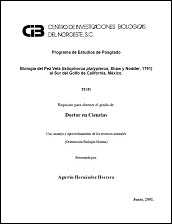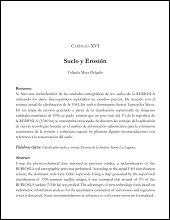The occurrence of yellowfin tuna (Thunnus albacares) at Espiritu Santo Seamount in the Gulf of California
Resumen
"Pelagic fishes are not evenly dispersed in the oceans, but aggregate at distinct locations in this vast and open environment. Nomadic species such as mackerels, tunas, and sharks form assemblages at seamounts (Klimley and Butler, 1988; Fontenau, 1991). Fisherman have recognized this behavior and have placed moorings with surface buoys in deep waters to provide artificial landmarks, around which fish concentrate and are more easily captured. These fish aggregating devices (termed FADs) are common in the tropical oceans (see review, Holland, 1996). In a sense, it may only be the larger size that separates a seamount from a man-made FAD. Fish may aggregate at seamounts for very different reasons. The opportunity to feed is greater because biomass at all trophic levels, from primary producer to apex consumer, is greater than in the open ocean (Boehlert and Genin, 1987). The disturbance of flow by the seamount creates eddies downstream that retain nutrients critical to the growth of phytoplankton, and this enrichment supports a greater abundance of consumers from zooplankton to apex predators. The dipole nature of seamount magnetic fields and the outward radiating valleys and ridges of magnetic minimums and maximums might provide landmarks in oceanic landscape that fish use as a reference to guide migration (see discussion of magnetic “topotaxis” in Klimley, 1993). Yellowfin (Thunnus albacares) and bigeye (Thunnus obesus) tunas do not reside long at the Cross Seamount near Hawaii, an observation inconsistent with the theory that tunas feed on prey that remain aggregated at the site; rather their rapid passage suggests that the site is a landmark used to guide migrations (Holland et al., 1999). Adult yellowfin tuna also stay briefl y (<5 min) at FADs off Kaena Point, Oahu (Klimley and Holloway, 1999)...”
Colecciones
Ítems relacionados
Mostrando ítems relacionados por Título, autor o materia.
-
PROMOCIÓN DEL PERIFITON PARA EL CULTIVO DE CAMARÓN BLANCO: HACIA UNA ACUICULTURA ECOLÓGICA
DOMENICO VOLTOLINA LOBINA; JUAN MANUEL AUDELO NARANJO; MARIA DEL ROSARIO PACHECO MARGES -
Suelo y Erosión
YOLANDA LOURDES MAYA DELGADO


